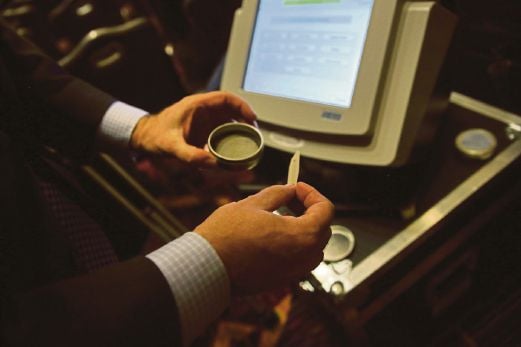IMAGINE a world without automation. Everything has to be done manually. No automatic car. No automatic packaging in factories. No automatic dispensing machine. Productivity would surely suffer.
Over the years, few would dispute that much of the increase in work productivity owes a lot to automation. In fact, our daily lives would be difficult without the many automatic gadgets that inventors have produced for the world.
The flush toilet is one example of automation at work. If not for the automatic float mechanism, we would have to manually fill the tank every time we need to flush. The float automates the filling of water to the desired level for easy flushing.
A key component of automation is the sensing device. In the case of the flush toilet, it is the water-level sensor. Nowadays, the operation of many automated devices employs sensors for temperature, moisture, colour, pressure, and even the presence of harmful bacteria and toxic chemicals.
Recent years have witnessed a growing demand for automatic devices. They have become critical in manufacturing, transport and medical equipment, to name a few. They all require reliable sensors to function effectively.
Many are convinced that sensors offer the potential to provide the solutions to many of mankind’s problems. In fact, sensors may even revolutionise many aspects of our lives. One latest development is that scientists are experimenting with new sensors to provide early warning on natural disasters, such as landslides.
There are now seven billion people on earth. By 2050, the prediction is that it will be 10 billion. They all need medical care. They all need to eat. Energy will continue to be indispensable. They all need clean water. Many such resources have shown signs of depletion.
This is why we need to treat the Earth’s resources more responsibly and use them more efficiently. In agriculture, for example, through better technologies, we are able to extract 10 times the yields we were getting 100 years ago. But, the downside can be seen in the over fertilisation of fields, which pollute rivers with nitrates.
Sensors can help us here. In harvesting agricultural products, sensor technology can be used to record the exact yield in each part of the field. Areas with a high yield can be fertilised less the next time.
Another example is our energy consumption. There are now excellent sensor solutions that can be used to improve the energy efficiency of buildings by automatically switching off and on according to the target temperature.
Many have also recognised the potential for sensors in health care. In malaria, still a menace in many parts of the world, there is concern that patients are treated with medication without the proven presence of the disease. This results in the development of antibiotic resistance pathogens, requiring new medicines to be developed again and again. The list of such toothless antibiotics is growing. Unless proper actions are taken to control the use of such medicine, we would soon see the reappearance of infectious diseases which we have long declared as no longer a threat.
This is where sensors can help. If we can develop low cost sensors, we could limit medication to patients who are truly affected. This would therefore reduce the resistance problems.
Sensors can also help diagnosis. Most disease diagnosis are now done in large expensive laboratories. We can develop portable and cost-efficient sensor, equally accurate, which can do fast diagnosis on site without having to send samples on long distances and wait for a long time. Faster diagnosis would also mean avoiding the wrong treatment.
There is also a growing demand for chemical sensors. The challenge for such sensors is that they can lose sensitivity over time. This is where more research is needed especially to look at new materials. We need to develop new materials which are not only sensitive but also selective.
There is no doubt that we are experiencing a growing demand for sensors. These include not only electronic sensors but also increasingly chemical and biological sensors. Sensors present new business opportunities. It therefore makes economic sense for us to increase our research investment in sensor development.






